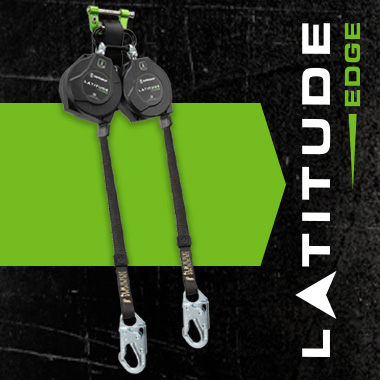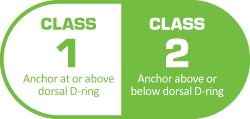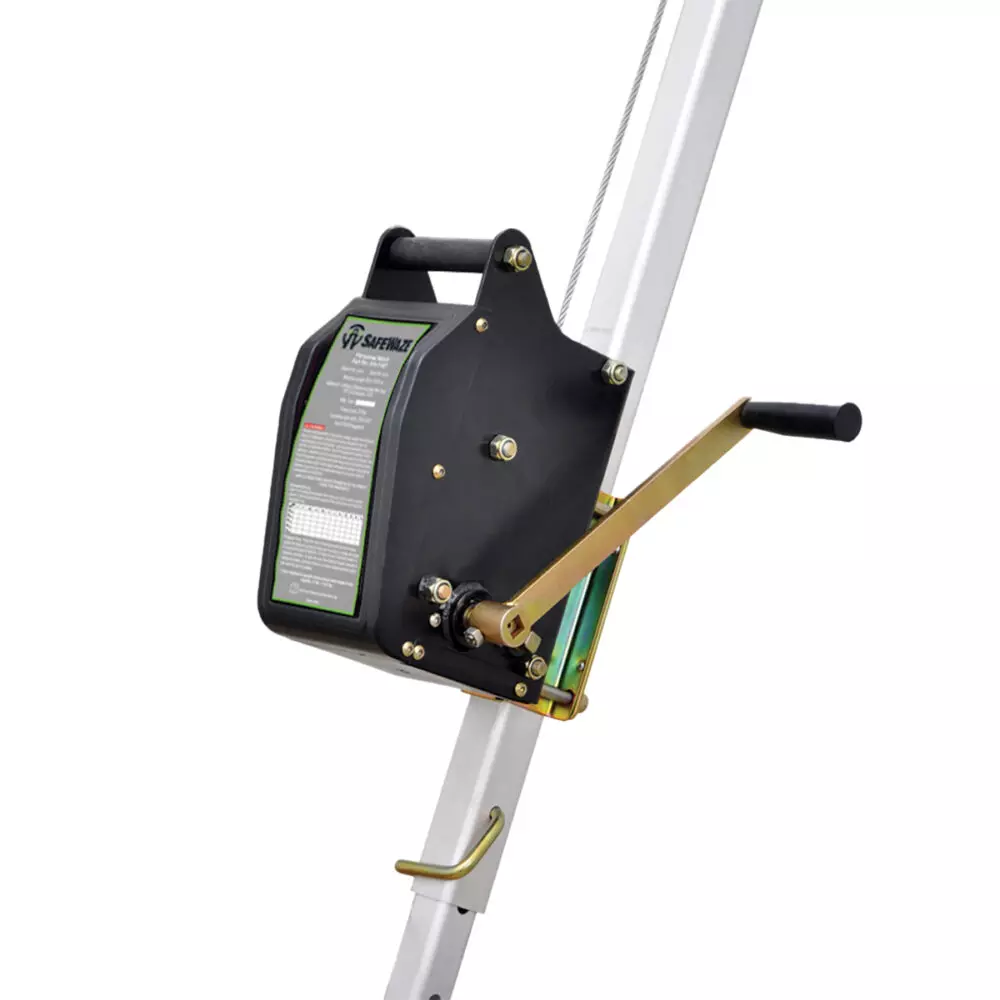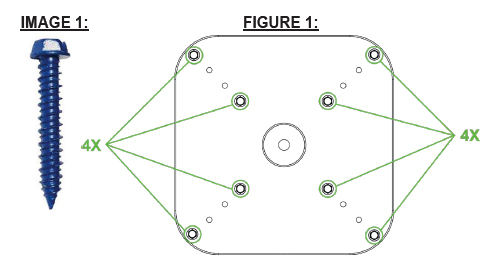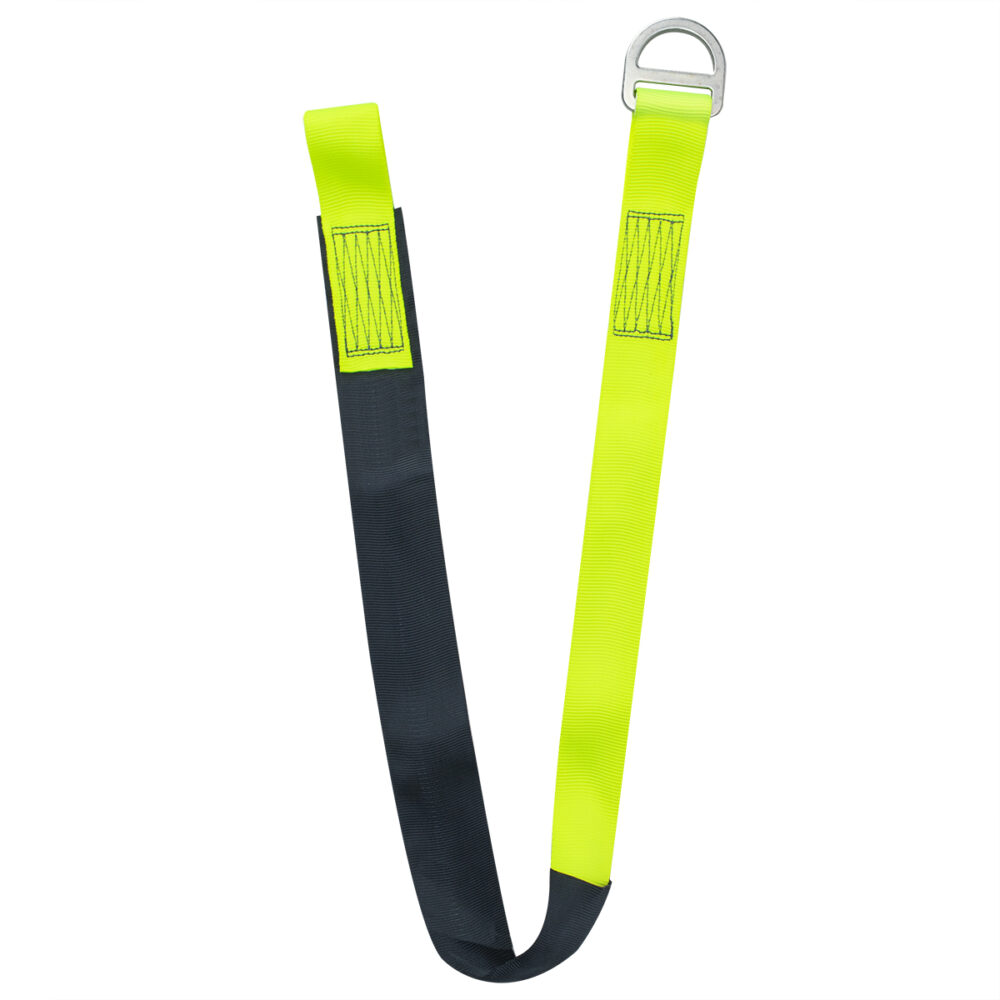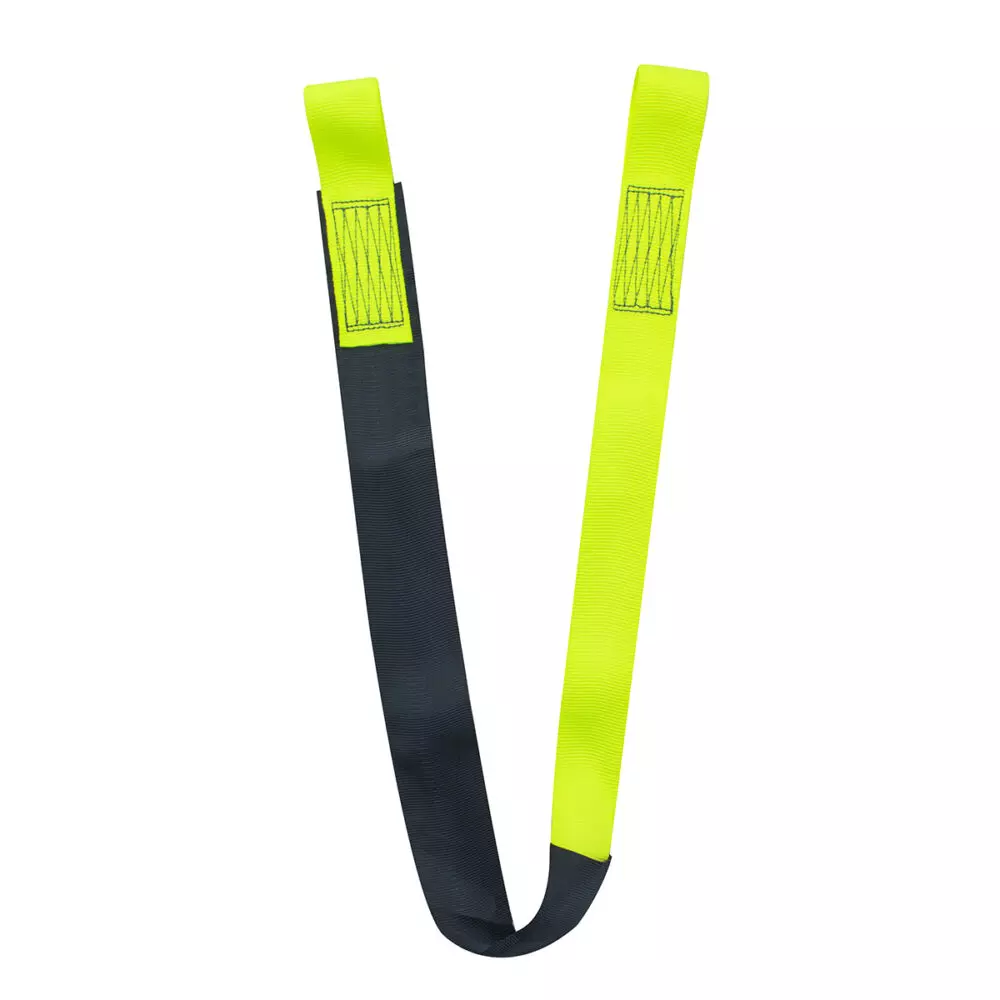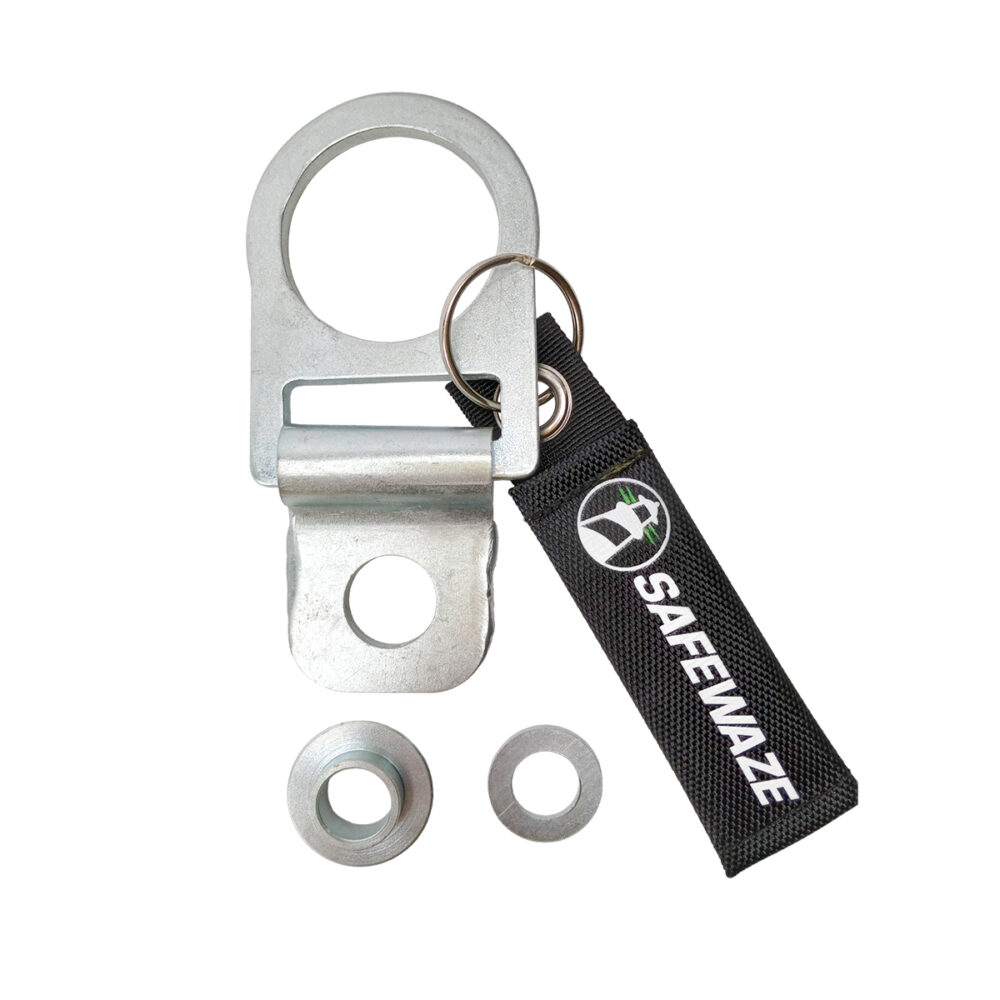- Should the wear sleeve on a concrete anchor strap protrude beyond the edge of the pour?
Yes, the wear sleeve should extend beyond the edge to protect the anchor strap. Incorrect installation can allow the webbing to come into direct contact with rough edges of the cured concrete. When the strap is used incorrectly, the webbing is much more prone to damage and degradation. Therefore, straps that do not have the wear sleeve protruding beyond the edge of the pour should be removed.
- Can the FS830 series of coated cable chokers be wrapped around a structure multiple times?
Yes. There is nothing to prohibit usage in instances where multiple wraps of the cable choker would need to be made around a structure prior to pass-through of the O-rings and attachment. There are varying sizes of structures in the field that may require more than one wrap of the cable and the FS830 series cable chokers are designed to allow for such attachment.
- Can a horizontal lifeline be used with the Safewaze SW900 Parapet Wall Anchor?
Yes. The SW900 is suitable for use with a horizontal lifeline as long as the lifeline runs perpendicular to the parapet wall on which the SW900 is installed. Under no circumstance can a horizontal lifeline be used with a SW900 in a configuration where the lifeline runs parallel with the parapet wall.
- Can a cross arm strap be used as an anchor point for a horizontal lifeline (HLL)?
Yes. Safewaze cross arm straps may be used as the anchorage connector component of a compatible HLL system. Suitability must be determined on-site by a competent person. Any length of cross arm strap may be used with an HLL provided the competent person assesses the complete system and determines the strap length will not result in a free fall which exceeds the limits permitted by the system.
- What is the proper method for use of Safewaze vertical beam anchors with a horizontal lifeline?
Safewaze offers a Vertical/Stationary Beam Anchor: 019-4009. Proper installation method as well as HLL attachment, capacities and more, can be found in the anchor's individual instruction manual.
- Can a temporary fixed beam anchor be used as an intermediate anchor point for the SafeLink horizontal lifeline system?
Yes. Use of a temporary fixed beam anchor as an intermediate attachment point for inverted SafeLink installation is an acceptable installation method.
- What is a Tie-Back Connector?
A tie-back connector is a versatile piece of fall protection equipment that serves two functions:
- Standard Connector: Functions as a self-retracting lifeline (SRL) or energy absorbing lanyard.
- Anchorage Connector: Acts as an anchorage connector by wrapping around a rated structure (I-beams or columns) and attaching back to itself.
Tie-back connectors completely remove the need for a separate anchorage device, streamlining the equipment workers require on the job. Whether looping securely around an I-beam, wrapping around a concrete column or attaching to other suitable structures, these connectors are extremely versatile and eliminate the need for a separate anchor. Unlike standard lanyards, these connectors are specially designed with locking snap hooks capable of withstanding forces when tied back into their own webbing. Standard hooks, on the other hand, lack this capability, as the gate - the weakest point of the hook - can bend or fail under the stress of a fall.
OSHA states:
"Unless a snap hook is a locking type specifically designed for the purpose of tying back into a lanyard, it shall not be engaged directly to webbing, rope, or wire rope."
This means only connectors specifically designed for tie-back use are safe and compliant.
Under no circumstances should a user ever tie a connector back into itself unless that connector is specifically designed for that purpose.
- Can the FS-EX311 single standing seam roof bracket anchor be used with Safewaze roofing kits?
Yes. The FS-EX311 can be used with any Safewaze roofing kit. However, the user must be aware that the structure to which the FS-EX311 is being attached must meet all pertinent OSHA, ANSI and local regulations and standards pertaining to anchorage strength.
OSHA 1926.500 and 1910.66 states, “Anchorages used for attachment of a personal fall arrest system (PFAS) shall be independent of any anchorage being used to support or suspend platforms and must support at least 5000 lbs. (4kN) per user attached; or be designed, installed and used as part of a complete PFAS which maintains a safety factor of at least two and is supervised by a qualified person.”
- Can the Safewaze FS-EX400-15 ratchet anchor strap be use on finished concrete?
Yes. Both sizes of Safewaze FS-EX400 series ratchet anchor straps are suitable for use on finished concrete.
- Can an overhead crane be used as a fall protection anchorage point?
OSHA allows workers to tie off directly to a non-moving crane or below the hook attachment in construction applications. OSHA states that a personal fall arrest system is permitted to be anchored to the crane’s hook when the following requirement is met: a qualified person has determined that the setup and rated capacity of the crane including the hook, load line and rigging meets or exceeds the requirements outlined in 1926.1423(d)(15) as stated below:
(15) Anchorages used for attachment of personal fall arrest equipment shall be independent of any anchorage being used to support or suspend platforms and capable of supporting at least 5000 pounds (22.2 kN) per employee attached; or shall be designed, installed and used as follows:
(i) as part of a complete personal fall arrest system which maintains a safety factor of at least two
(ii) under the supervision of a qualified personOSHA does not define how many workers can be tied off to the approved hook at one time. Most assume that it is only one and many companies limit the maximum number of workers to two. The safety professional in charge must use his or her professional judgment to determine what is safest for that particular application.
For general industry, OSHA can allow direct attachment to a crane only if you are following OSHA’s hierarchy of controls. This means that the crane attachment point, crane controls and administrative controls must be engineered or validated by a qualified person. Contact your local OSHA office for proper clarifications.
For fall protection coverage in linear work areas, a qualified engineer can add an enclosed track anchorage system along crane bridges. In this situation, the administrative controls require the crane to be locked out and tagged out before using its structure as a fall arrest anchorage point.
- PRODUCTS
-
-
-
Latitude Edge Class 2 SRL-Ps
Combine best in class engineering with Class 2 versatility for use on a wide range of job sites, including the most extreme leading-edge environments.
-
- KNOWLEDGE
- COMPANY
- NEWS
- ACADEMY
